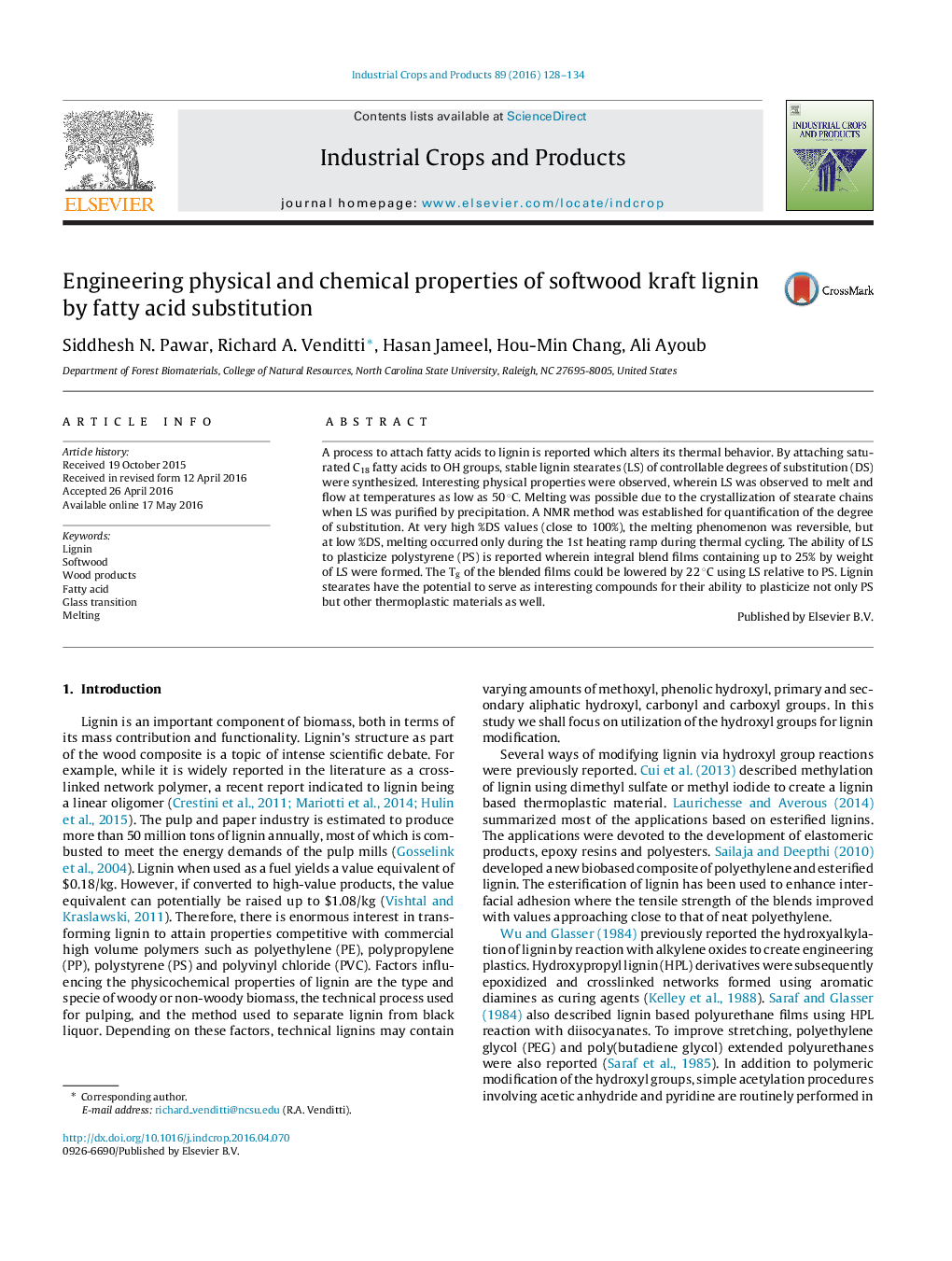| کد مقاله | کد نشریه | سال انتشار | مقاله انگلیسی | نسخه تمام متن |
|---|---|---|---|---|
| 4512145 | 1624821 | 2016 | 7 صفحه PDF | دانلود رایگان |
• A method to graft fatty acids to lignin was carried out to improve the processability of lignin.
• A large window of products with controlled degree of substitution could be achieved. A 1H NMR method was developed for quantification of the degree of substitution.
• Interesting physical properties were observed with lignin stearates found to melt at temperatures as low as 50 ºC.
A process to attach fatty acids to lignin is reported which alters its thermal behavior. By attaching saturated C18 fatty acids to OH groups, stable lignin stearates (LS) of controllable degrees of substitution (DS) were synthesized. Interesting physical properties were observed, wherein LS was observed to melt and flow at temperatures as low as 50 °C. Melting was possible due to the crystallization of stearate chains when LS was purified by precipitation. A NMR method was established for quantification of the degree of substitution. At very high %DS values (close to 100%), the melting phenomenon was reversible, but at low %DS, melting occurred only during the 1st heating ramp during thermal cycling. The ability of LS to plasticize polystyrene (PS) is reported wherein integral blend films containing up to 25% by weight of LS were formed. The Tg of the blended films could be lowered by 22 °C using LS relative to PS. Lignin stearates have the potential to serve as interesting compounds for their ability to plasticize not only PS but other thermoplastic materials as well.
This research focuses on the chemical modification of lignin with stearate of controlled degree of substitution.Figure optionsDownload as PowerPoint slide
Journal: Industrial Crops and Products - Volume 89, 30 October 2016, Pages 128–134
